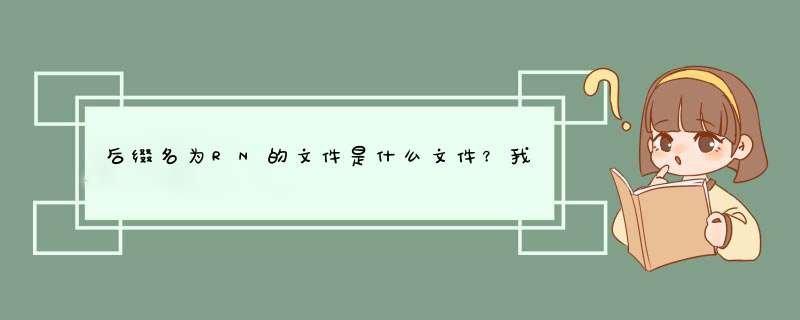
1 首先,示范:给D盘一个文件夹加密,暂时命名为 tttt
2 显示系统隐藏文件,我们发现tttt文件夹下多了两个文件,Thumbs.db desktop.ini ,其实我们加密的东西都放在里面,我们以下的破解步骤主要是对它做处理,第二个不多说了,文件夹图哗空标相关。
3. 开始-->运行-->CMD 然后进入tttt文件夹。
4 键入:attrib -s -r -h Thumbs.db 这一步主要是去掉 Thumbs.db 的其他属性
5 运行完上面命令,我们发现Thumbs.db 已经变成普通文件夹的图标,并且可以进入,为了方便,我们给Thumbs.db 重新命名为 t1
6 进入t1,发现有文件夹 sys ,注意:这个文件夹的名字后面有空格,直接对它进行重命名,我们改成t2
7 在命令提示符中 进入t2,发现有文件夹 system. (注意:名字有个. )在Windows下是打不开的 也不能直接重新命名
8 在命令提示符中 输入 dir /x 这命令相信谁都会吧
9 在命令提示符中 输入 REN SYSTEM~1 t3 ---->主要是对system. 进行重新命名
10 现在已经直接可以进入t3了,里面有一堆文件,其中有一个 Thumbs.db.{d3e34b21-9d75-101a-8c3d-00aa001a1652}, 我们给它重新命名为t4,之后发现变成文件夹图标,双击乱清瞎进入,我们的文件都在里面,收工。
使用Java *** 作文本文件的方法详解摘要: 最初java是不支持对文本文件的处理的,为了弥补这个缺憾而引入了Reader和Writer两个类
最初java是不支持对文本文件的处理的,为了弥补这个缺憾而引入了Reader和Writer两个类,这两个类都是抽象类,Writer中 write(char[] ch,int off,int
length),flush()和close()方法为抽象方法,Reader中read(char[] ch,int off,int length)和close()方法是抽象方法。子类应该分别实现他们。 当我们读写文本文件的时候,采用Reader是非常方便的,比如FileReader,InputStreamReader和BufferedReader。其中最重要的类是InputStreamReader,它是字节转换为字符的桥梁。你可以在构造器重指定编码的方式,如果不指定的话将采用底层 *** 作系统的默认编码方式,例如GBK等。当使用FileReader读取文件的时候。FileReader fr = new FileReader("ming.txt")
int ch = 0
while((ch = fr.read())!=-1 )
{
System.out.print((char)ch)
}
其中read()方法返回的是读取得下个字符。当然你也可以使用read(char[] ch,int off,int length)这和处理二进制文件的时候类似,不多说了。如果使用InputStreamReader来读取文件的时候while((ch = isr.read())!=-1)
{
System.out.print((char)ch)
}
这和FileReader并没有什么区别,事实上在FileReader中的方法都是从InputStreamReader中继承过来的。read()方法是比较好费时间的,如果为了提高效率我们可以使用BufferedReader对Reader进行包装,这样可以提高读取得速度,我们可以一行一行的读取文本,使用readLine()方法。BufferedReader br = new BufferedReader(new InputStreamReader(new FileInputStream("ming.txt")))
String data = null
while((data = br.readLine())!=null)
{
System.out.println(data)
}
当你明白了如何用Reader来读取文本文件的时候那么用Writer写文件同样非常简单。有一点需要注意,当你写文件的时候,穗谈为了提高效率,写入的枝基数据会先放入缓冲区,然猛族谨后写入文件。因此有时候你需要主动调用flush()方法。与上面对应的写文件的方法为:
FileWriter fw = new FileWriter("hello.txt")
String s = "hello world"
fw.write(s,0,s.length())
fw.flush()OutputStreamWriter osw = new OutputStreamWriter(new FileOutputStream("hello2.txt"))
osw.write(s,0,s.length())
osw.flush()PrintWriter pw = new PrintWriter(new OutputStreamWriter(new FileOutputStream("hello3.txt")),true)
pw.println(s)
不要忘记用完后关闭流!下面是个小例子,帮助新手理解。其实有的时候java的IO系统是需要我们多记记的,不然哪天就生疏了。
import java.io.*public class TestFile2
{
public static void main(String[] args) throws IOException
{
FileReader fr = new FileReader("ming.txt")
char[] buffer = new char[1024]
int ch = 0
while((ch = fr.read())!=-1 )
{
System.out.print((char)ch)
} InputStreamReader isr = new InputStreamReader(new FileInputStream("ming.txt"))
while((ch = isr.read())!=-1)
{
System.out.print((char)ch)
} BufferedReader br = new BufferedReader(new InputStreamReader(new FileInputStream("ming.txt")))
String data = null
while((data = br.readLine())!=null)
{
System.out.println(data)
} FileWriter fw = new FileWriter("hello.txt")
String s = "hello world"
fw.write(s,0,s.length())
fw.flush() OutputStreamWriter osw = new OutputStreamWriter(new FileOutputStream("hello2.txt"))
osw.write(s,0,s.length())
osw.flush() PrintWriter pw = new PrintWriter(new OutputStreamWriter(new FileOutputStream("hello3.txt")),true)
pw.println(s)
fr.close()
isr.close()
br.close()
fw.close()
osw.close()
pw.close()
}
}
java中多种方式读文件
一、多种方式读文件内容。
1、按字节读取文件内容
2、按字符读取文件内容
3、按行读取文件内容
4、随机读取文件内容
import java.io.BufferedReader
import java.io.File
import java.io.FileInputStream
import java.io.FileReader
import java.io.IOException
import java.io.InputStream
import java.io.InputStreamReader
import java.io.RandomAccessFile
import java.io.Reader
public class ReadFromFile {
/**
* 以字节为单位读取文件,常用于读二进制文件,如图片、声音、影像等文件。
* @param fileName 文件的名
*/
public static void readFileByBytes(String fileName){
File file = new File(fileName)
InputStream in = null
try {
System.out.println("以字节为单位读取文件内容,一次读一个字节:")
// 一次读一个字节
in = new FileInputStream(file)
int tempbyte
while((tempbyte=in.read()) != -1){
System.out.write(tempbyte)
}
in.close()
} catch (IOException e) {
e.printStackTrace()
return
}
try {
System.out.println("以字节为单位读取文件内容,一次读多个字节:")
//一次读多个字节
byte[] tempbytes = new byte[100]
int byteread = 0
in = new FileInputStream(fileName)
ReadFromFile.showAvailableBytes(in)
//读入多个字节到字节数组中,byteread为一次读入的字节数
while ((byteread = in.read(tempbytes)) != -1){
System.out.write(tempbytes, 0, byteread)
}
} catch (Exception e1) {
e1.printStackTrace()
} finally {
if (in != null){
try {
in.close()
} catch (IOException e1) {
}
}
}
}
/**
* 以字符为单位读取文件,常用于读文本,数字等类型的文件
* @param fileName 文件名
*/
public static void readFileByChars(String fileName){
File file = new File(fileName)
Reader reader = null
try {
System.out.println("以字符为单位读取文件内容,一次读一个字节:")
// 一次读一个字符
reader = new InputStreamReader(new FileInputStream(file))
int tempchar
while ((tempchar = reader.read()) != -1){
//对于windows下,rn这两个字符在一起时,表示一个换行。
//但如果这两个字符分开显示时,会换两次行。
//因此,屏蔽掉r,或者屏蔽n。否则,将会多出很多空行。
if (((char)tempchar) != 'r'){
System.out.print((char)tempchar)
}
}
reader.close()
} catch (Exception e) {
e.printStackTrace()
}
try {
System.out.println("以字符为单位读取文件内容,一次读多个字节:")
//一次读多个字符
char[] tempchars = new char[30]
int charread = 0
reader = new InputStreamReader(new FileInputStream(fileName))
//读入多个字符到字符数组中,charread为一次读取字符数
while ((charread = reader.read(tempchars))!=-1){
//同样屏蔽掉r不显示
if ((charread == tempchars.length)&&(tempchars[tempchars.length-1] != 'r')){
System.out.print(tempchars)
}else{
for (int i=0i<charreadi++){
if(tempchars[i] == 'r'){
continue
}else{
System.out.print(tempchars[i])
}
}
}
}
} catch (Exception e1) {
e1.printStackTrace()
}finally {
if (reader != null){
try {
reader.close()
} catch (IOException e1) {
}
}
}
}
/**
* 以行为单位读取文件,常用于读面向行的格式化文件
* @param fileName 文件名
*/
public static void readFileByLines(String fileName){
File file = new File(fileName)
BufferedReader reader = null
try {
System.out.println("以行为单位读取文件内容,一次读一整行:")
reader = new BufferedReader(new FileReader(file))
String tempString = null
int line = 1
//一次读入一行,直到读入null为文件结束
while ((tempString = reader.readLine()) != null){
//显示行号
System.out.println("line " + line + ": " + tempString)
line++
}
reader.close()
} catch (IOException e) {
e.printStackTrace()
} finally {
if (reader != null){
try {
reader.close()
} catch (IOException e1) {
}
}
}
}
/**
* 随机读取文件内容
* @param fileName 文件名
*/
public static void readFileByRandomAccess(String fileName){
RandomAccessFile randomFile = null
try {
System.out.println("随机读取一段文件内容:")
// 打开一个随机访问文件流,按只读方式
randomFile = new RandomAccessFile(fileName, "r")
// 文件长度,字节数
long fileLength = randomFile.length()
// 读文件的起始位置
int beginIndex = (fileLength >4) ? 4 : 0
//将读文件的开始位置移到beginIndex位置。
randomFile.seek(beginIndex)
byte[] bytes = new byte[10]
int byteread = 0
//一次读10个字节,如果文件内容不足10个字节,则读剩下的字节。
//将一次读取的字节数赋给byteread
while ((byteread = randomFile.read(bytes)) != -1){
System.out.write(bytes, 0, byteread)
}
} catch (IOException e){
e.printStackTrace()
} finally {
if (randomFile != null){
try {
randomFile.close()
} catch (IOException e1) {
}
}
}
}
/**
* 显示输入流中还剩的字节数
* @param in
*/
private static void showAvailableBytes(InputStream in){
try {
System.out.println("当前字节输入流中的字节数为:" + in.available())
} catch (IOException e) {
e.printStackTrace()
}
}
public static void main(String[] args) {
String fileName = "C:/temp/newTemp.txt"
ReadFromFile.readFileByBytes(fileName)
ReadFromFile.readFileByChars(fileName)
ReadFromFile.readFileByLines(fileName)
ReadFromFile.readFileByRandomAccess(fileName)
}
}
二、将内容追加到文件尾部
import java.io.FileWriter
import java.io.IOException
import java.io.RandomAccessFile
/**
* 将内容追加到文件尾部
*/
public class AppendToFile {
/**
* A方法追加文件:使用RandomAccessFile
* @param fileName 文件名
* @param content 追加的内容
*/
public static void appendMethodA(String fileName,
String content){
try {
// 打开一个随机访问文件流,按读写方式
RandomAccessFile randomFile = new RandomAccessFile(fileName, "rw")
// 文件长度,字节数
long fileLength = randomFile.length()
//将写文件指针移到文件尾。
randomFile.seek(fileLength)
randomFile.writeBytes(content)
randomFile.close()
} catch (IOException e){
e.printStackTrace()
}
}
/**
* B方法追加文件:使用FileWriter
* @param fileName
* @param content
*/
public static void appendMethodB(String fileName, String content){
try {
//打开一个写文件器,构造函数中的第二个参数true表示以追加形式写文件
FileWriter writer = new FileWriter(fileName, true)
writer.write(content)
writer.close()
} catch (IOException e) {
e.printStackTrace()
}
}
public static void main(String[] args) {
String fileName = "C:/temp/newTemp.txt"
String content = "new append!"
//按方法A追加文件
AppendToFile.appendMethodA(fileName, content)
AppendToFile.appendMethodA(fileName, "append end. n")
//显示文件内容
ReadFromFile.readFileByLines(fileName)
//按方法B追加文件
AppendToFile.appendMethodB(fileName, content)
AppendToFile.appendMethodB(fileName, "append end. n")
//显示文件内容
ReadFromFile.readFileByLines(fileName)
}
}
找回那个加密软燃丛敬件,再解密。不要说你忘记了密码!如果这样的话,恢复机率很低,几乎不可能。
或说说是什么加密软件,皮慎可能有办法郑裂
你再运行lockdir.exe,它会提示你输入密码,输入密码点确定后文件就会恢复了
欢迎分享,转载请注明来源:内存溢出

 微信扫一扫
微信扫一扫
 支付宝扫一扫
支付宝扫一扫
评论列表(0条)